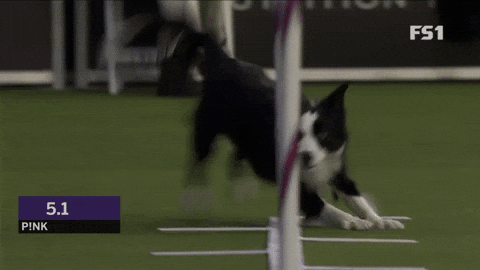Hey everyone and welcome to another running article!
First of all, if you are new, welcome! Make sure you are subscribed and you can get these letters straight in your inbox!
Last week I talked about how the Asheville Marathon 2025 went. The implication there is that the Asheville Marathon Prep series is officially over.
It’s almost a bittersweet moment. So much build up, 10+ great articles and videos (not that I’m biased) and now here we are.
By the way, if you haven’t seen the series on YouTube, check it out below, or share it with a runner!
Asheville Marathon Prep YouTube Series
But don’t worry, when one thing ends, another begins!
And that’s what I want to talk about today!
Let’s jump in!
2025 Races
I have a few races I’m excited about for the remainder of this year. I haven’t signed up for all of them yet, so things could change, but I am pretty set on them at this point.
Marathons
Since we are coming off the marathon series, I’ll start there.
This past marathon prep I started out with the tagline “3rd attempt at sub 3” and if you read the article or watched the YouTube video, you know that didn’t happen.
And to be fair, perhaps picking a course with 1200 ft of elevation gain wasn’t a good idea for my sub 3 hour marathon attempt anyways. In fact, only 2 people ran sub 3 that day.
But! Just because it didn’t happen in Asheville, does not mean I’m giving up on running sub 3 in 2025! That was just the beginning of the running season. Marathons are popular in the Spring AND the Fall.
So I now have my eyes set on 2 more marathons this year to take a swing at sub 3!
The first one won’t be until the end of August. That gives me 4 months. One thing I learned from this last marathon block is that I don’t want to make a mistake and overtrain or peak too early.
But I also want to stay in good shape year round. As such, my goal is to build mileage back up and just keep generally high 40-50 mile weeks until the prep starts.
That will do 2 things:
Keep me injury free (hopefully): The majority of running injuries happen when runners are ramping mileage up. One of the best ways to combat that is if our bodies are used to running higher mileage year round.
Shortens the total time I need to get in marathon shape: A lot of times, longer marathon blocks are scheduled because mileage needs to be ramped up slowly. Along the same lines as above, if we already have higher mileage, we can skip those initial weeks.
I haven’t signed up for the August marathon yet, so I won’t spoil it yet. But I’m looking at one that should be very flat and a totally different kind of experience than I’ve ever raced before!
After August, I’ll probably target an October/November race. There are several in North Carolina I could attempt so I haven’t decided where I want to go yet. Coastal ones are flatter so I may lean that way, but we also have a few that are closer to us so we don’t have to travel as far…
That late Fall race will also be a good chance to test racing multiple marathons in a single season. A challenge I haven’t faced yet. I’m not sure how I will manage the training load yet. Especially if they are only 5-6 weeks apart. But I’ll be sure to document it every step of the way!
Spartan Racing
This leaves us with the in between time. It is currently March and that next marathon isn’t until the end of August.
Again, that leaves us with 4 months of other “stuff.”
Our focus is shifting from full on road marathon racing to trail running and obstacles as I look ahead to my next race:
Spartan Beast in Cincinnati!
If you don’t know what a Spartan race is, I wrote an in depth article on my last one you can check out here:
But the quick summary is that it’s a trail race with obstacles.
Those obstacles could be climbing over a wall, climbing a rope, crawling under barbed wire, advanced monkey bars, carrying heavy things, and of course the classic spear throw. Basically this ⬇️
All of those obstacles while managing running in between the different challenges.
The Spartan series has 4 main categories you can race in:
Sprint: 5K with 20 obstacles
Super: 10K with 25 obstacles
Beast: 21K with 30 obstacles
Ultra: 50K with 60 obstacles
Last time I did a Super and really enjoyed it. But it made me wonder if I’d be more suited for a longer distance race. The Beast distance (for those in the US) is 13.1 miles or a half marathon. It’s double the distance as the Super, but with only 5 extra obstacles.
That inevitably means there are far more stretches of plain trail racing.
The only tricky piece for me is that the Cincinnati course notoriously takes place on a ski mountain. That means there is a ton of steep vertical climbs. Things I’m not used to when training for road marathons.
Which segues great into how I’m going to mix up my training. But before we jump into that, I can’t leave this section without mentioning after the Beast in June, I do have one more Spartan race lined up back home in Asheville for the Spartan Super in early August!
That race will be a lot of fun, I’ll be doing it with my same buddy who just ran the half marathon with me in Asheville, and with it being a Super, it could be an interesting form of a tune up race for that August marathon!
Anyways…we can move on now 🙂
Next Phase of Training
Training for a trail race up steep terrain is already a super different challenge, but I also have to add in training upper body strength and endurance for all the obstacles.
So…what better time to put everything into the ultimate experiment?
With a giant AI experiment!
That’s right, I’m going to be using AI to guide my training plan for the Spartan Beast in June. The goal is to place in the top 10 overall.
That means (according to the results from last year) I need to complete the half marathon in under 2:40 including the 30 obstacles. The race itself, by the way, has about 3,000 ft of total elevation gain with the average climbs/descents at an 8% grade and the steepest climb at a 40% grade!
Managing pacing in that kind of terrain will be borderline impossible. That’s why during prep I really need to dial in an effort based approach and tune in to what that feels like.
The less walking and breaks I take, the better. But the more obstacles I fail, the more running penalties I have to do, and time gets wasted. So it’s a tradeoff of managing energy, running compromised, and completing obstacles.
As such, I want to train that way.
Lucky for me, we actually live next to the tallest mountain range in the eastern United States! And also lucky for me, the trailhead to climb up to that range is only 10 minutes from our house!
At the Cincinnati race, I’ll run up 3,000 ft of total elevation over the 13.1 miles. But we have a cool trail where I can run 3,000 ft of gain in only 4.5 miles!
So where does the AI come in?
2 main ways actually…
AI Adapted Running Plan
I have a solid running plan for a road half marathon. It includes good speed sessions, intervals, long runs, etc. All of those workouts, however, will mainly involve paced base work rather than effort based work.
The goal for me is to run on the trails for every single workout, except when I don’t have trails to access.
With AI, I can adapt my road running plan to take into account elevation and terrain and adjust the pace goals for the grade. The hope would be that by adapting to the pace, I can still get the same training stimulus as if I were on the road, but now with the added stimulus of steep trail running.
The secondary goal here is that will train my body to understand the effort of those paces on the trail so I know exactly how far to push when it comes to race day.
AI Gym Routine
The next place I’m using AI is in the gym. To get in shape for the obstacles is going to take a good amount of training different stimuli. Just like with running.
I need good strength, good mobility, and good upper body endurance. A lot of times when we strength train in the gym we do reps and sets with ample rest. For example, let’s say we are doing pullups. Maybe you do 5 reps, rest for 1-2 minutes, then do another set. Maybe you do that 4 times total.
That typically means our heart rate stays pretty low when we do the exercise. Very rarely are we doing strength based exercises with elevated heart rates.
But almost all 30 obstacles during this race will have to be completed with an elevated heart rate.
That once again makes the gym training pretty challenging. Doing just a bunch of HIIT won’t really cut it either, because we do want to ensure we are optimizing building strength and power output.
As such, with the help of AI, I have crafted a schedule I’m pretty excited about. I will have a few days dedicated to more strength based work with the traditional sets and reps. Then I’ll have a couple of what I’m calling circuit days. These are Hyrox inspired workouts with more of an OCR flare.
I plan to share these as I go, so be sure to follow me on Instagram or TikTok if you want the behind the scenes!
Launching a New Content Series
Which segues us into the most exciting news, which is a new content series!
Just like we had an Asheville prep series, I am launching a Spartan Beast series too!
This will have all sorts of cool content as I train on the trails in some of the most gorgeous places this country has to offer! It will also have unique content centered around my AI based training, obstacle specific work, and so much more!
One challenge I’m going to try is climbing Celo Knob (the first mountain peak on that trail with over 3K ft in vertical gain) 30 times over April/May. I’ll keep track of time, heart rate, and all that to figure out how I’m improving.
Lastly, that leaves us with next week's article and video. It will be the official start to this new series!
And what better way to start than with a base fitness test. I figure if I want to really put AI to the test in my training, then we should get a base fitness test now and then after the race and compare to see if I have actually improved at all!
So as always, thanks for reading! If you do want to help out the brand, it always goes a long way to simply share these articles, subscribe if you haven’t, and checkout my YouTube channel for new episodes each week!
And until next time, run with joy!














Interested in learning how you use AI to help with this Spartan Race!
Goals for training sound crazy!